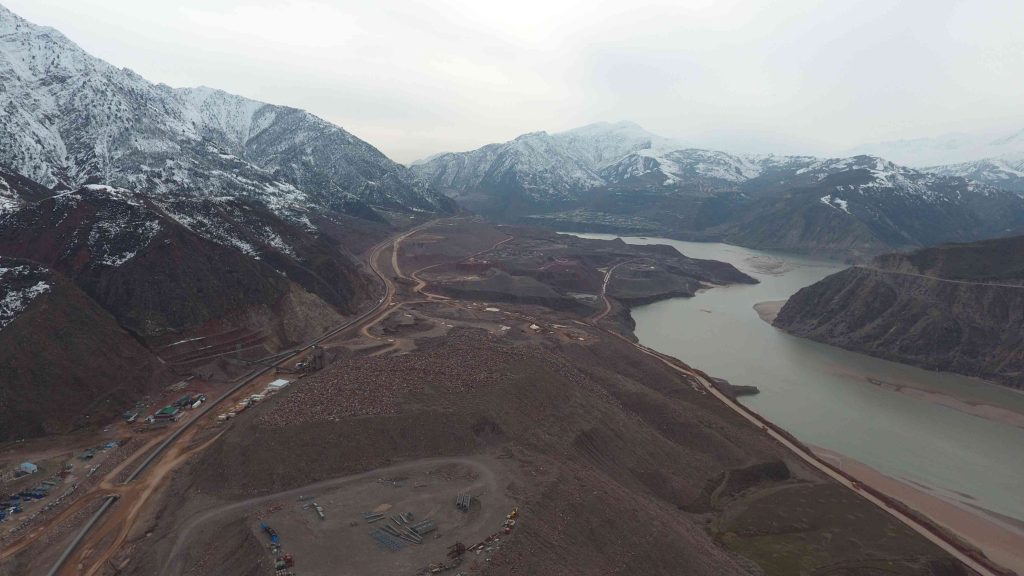The Rogun dam was part of the Soviet water infrastructure plans for Central Asia that eliminated the Aral Sea. Its construction would have a huge impact on downstream countries: Afghanistan, Turkmenistan and Uzbekistan. Reduced and seasonally redistributed water flows in the Amu Darya (the river that gets 40 per cent of its water from the Vakhsh, where the Rogun dam is being built) is likely to have a huge impact both on ecosystems and agriculture, which relies heavily on the inefficient irrigation system introduced in Soviet times. The World Bank has been for years adamantly insisting that the pattern of river flow below the Vakhsh hydropower cascade will not change after the Rogun HPP is built but has failed to present any scientific proof for this counterintuitive statement or actual assessment of needed environmental flows into Amu Darya.
Neither other options for regulation nor operation under unfavorable natural flow variations are considered in the ESIA of the Rogun HPP project. Due to the enormous scale of the reservoir being created, the Rogun HPP has a large potential for negative impacts on ecosystem services and the livelihoods of the population downstream to the Aral Sea, and this negative potential may fully manifest itself under alternative scenarios for operation of the Rogun HPP or changes in the surrounding natural conditions.
Furthermore, the “updated” Environmental and Social Impact Assessment (ESIA), published in December 2023 by the World Bank, omits consequences of several risks, which have previously been the focus of public attention. Instead of addressing the possible functions of the Rogun reservoir in confronting the basin-wide water crisis unfurling in the Amu-Darya River, the ESIA limits its assessment area to the Rogun reservoir footprint and a 17-kilometer downstream river section all the way to the next Nurek reservoir. There is no credible answer to a crucial question, whether there is sufficient water resource available for filling the giant reservoir without compromising needs of other sectors and riparian countries. Eight million people downstream may suffer if the giant reservoir redistributes the flows in Amu Darya River, which must be properly assessed and mitigated.
Related reading:
A Tale of Two Dams: Mega Projects and Water Cooperation in Central Asia. 2023
Rogun Dam conflict between Tajikistan and Uzbekistan,2023
Water Corruption in Central Asia: A Rapid Review. 2023
How does the Rogun Dam affect water and energy scarcity in Central Asia? . 2021
Water Resources in Central Asia: International Context. 2018.
Current and Future Challenges in the Amu Darya Basin. 2017
Water disputes in Central Asia. 2015
The Rogun Dam Controversy.2014
Rogun – Hydropower Generating Controversy in Central Asia. 2014
Is Rogun a Silver Bullet for Water Scarcity in Central Asia? 2013
Rogun Dam—Path to Energy Independence or Security Threat? 2011
Impact of Rogun Dam on Downstream Uzbekistan Agriculture. 2011
Request for Inspection from Uzbek NGOs. World Bank’s Energy Loss Reduction Project. 2010
Оценка влияния Рогунского водохранилища на водный режим реки Амударьи. 2007



